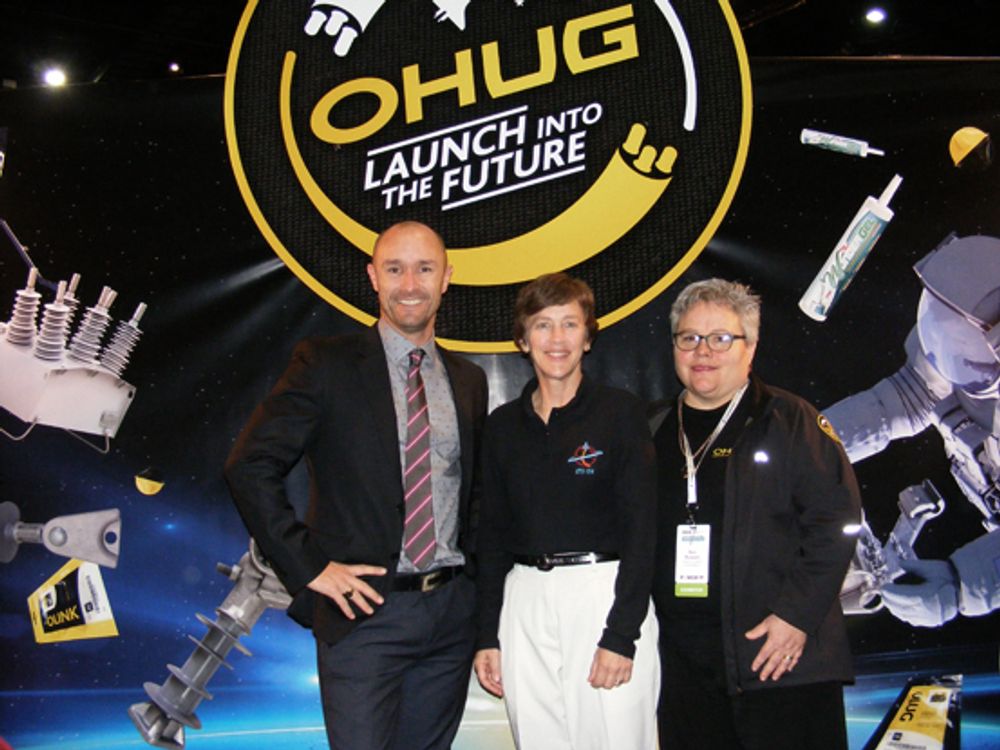Press Release
Published 08/2015
NOJA Power Distributor OHUG brings retired NASA astronaut Wendy B. Lawrence to present keynote speech at NZ’s premier power engineering event
Veteran U.S. space program mission specialist recounts revision of NASA safety policy after Columbia space shuttle disaster and notes its relevance to electricity distribution industry

Electrical switchgear engineers NOJA Power today announces its New Zealand distributor OHUG Power Equipment Ltd’s success in organising for retired NASA astronaut Wendy B. Lawrence to present the keynote speech at the EEA Conference. The conference, held in Wellington, NZ, at the end of June, is New Zealand’s premier power engineering event, attracting over 1,000 delegates and visitors.
OHUG has been NOJA Power’s exclusive distributor in New Zealand since 2007 and has succeeded in gaining over 50 percent market share for Automatic Circuit Reclosers (ACR or “auto-recloser”) in the electricity network protection segment with NOJA Power’s products. The company was a major sponsor and exhibitor at the EEA Conference. Glen Harris, NOJA Power’s Brisbane-based Australian and Pacific Sales Manager, also hails from New Zealand.
OHUG’s Managing Director (Operations), Nan Russell, met Captain Lawrence when they were fellow students at the U.S. Naval Academy, Annapolis. Russell recently contacted the astronaut to invite her to make the keynote speech at the EEA Conference.
The Columbia disaster formed the subject of Lawrence’s keynote speech and tied in with the theme of this year’s EEA Conference; “Delivering Leadership: Technology, Safety & Quality”. She explained how the Space Shuttle was lost after a chunk of foam insulation from the booster system broke free during launch and impacted the leading edge of the craft’s wing, damaging heat-resistant tiles. The fault allowed the hot gasses generated during re-entry to penetrate the wing structure causing it to fail, destabilizing Columbia and leading to its break up and the tragic loss of all seven crew.
The subsequent investigation into the disaster convinced NASA to change its safety policy from one based on a strategy of “proving a system is not safe” to an emphasis on “proving a system is safe” before it is deployed on a mission. Lawrence noted that while the latter strategy was more difficult and expensive to implement, it resulted in better system integrity and raised safety levels. She concluded that such an approach would be advantageous for the electricity distribution industry.
“Astronaut Wendy B. Lawrence’s keynote speech at the EEA Conference about the loss of Columbia and its seven crew provided a sobering lesson on the need to put safety at the forefront regardless of whether systems are for applications as esoteric as space flight or for more down-to-earth use such as electricity distribution,” says Neil O’Sullivan, NOJA Power’s Managing Director. “It’s a lesson that needs little reinforcement for NOJA Power as safety––together with environmental considerations––have always been at the top of our list of product design criteria for our network protection switchgear.”
NOJA Power’s OSM series ACRs benefit from stainless steel enclosures that form the only solid dielectric units with controlled internal arc fault venting on the market. The controlled arc fault venting design is in accordance with the requirements of IEC62271-200 Clause 6.106 and Annex A, and the efficacy of this important safety feature has been tested and verified by independent test laboratories. Another notable feature of the ACRs is the use of vacuum interrupters and solid dielectric insulation instead of the environmentally unfriendly oil or Sulphur hexafluoride (SF6) gas used in sectionalizers and older auto-recloser products.
According to NASA’s biography of Wendy B. Lawrence, she was a distinguished flight school graduate and designated as a naval aviator in July 1982. She has more than 1,500 hours flight time in six different types of helicopters and has made more than 800 shipboard landings. Lawrence joined the space program in 1992 and took part as a mission specialist in four Space Shuttle flights from 1995 to 2005. Her final mission was aboard STS-114 Discovery, notable because it was the first flight after the Columbia Space Shuttle disaster in February 2003.
Want to stay up to date with Electrical Distribution Technology?
Join our list for a free weekly technical bulletin, as we share our Global Electrical Engineering experience directly to your inbox.
Subscribe →